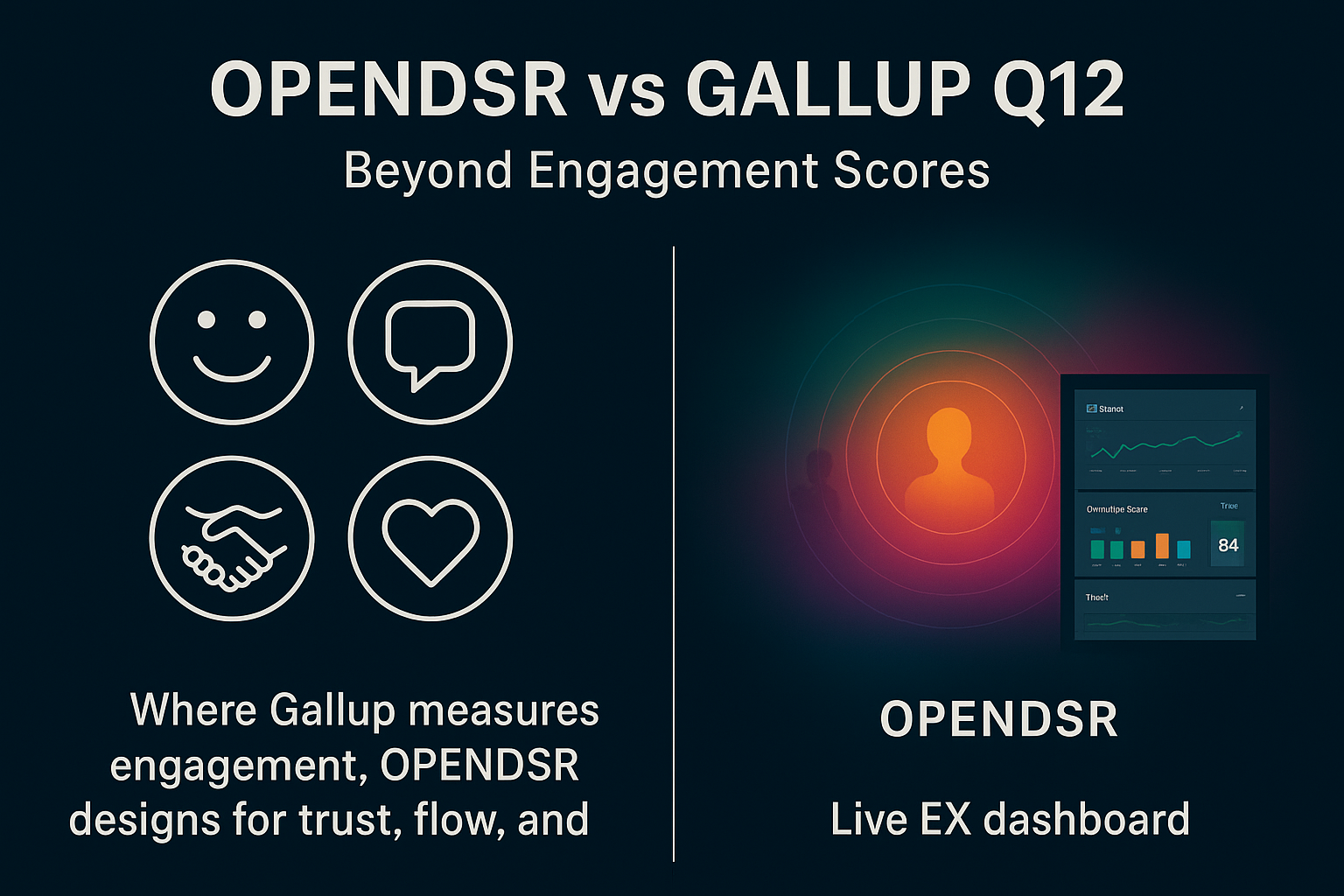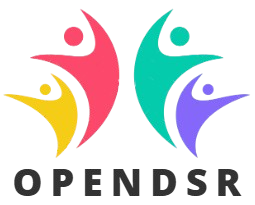
OPENDSR vs Gallup Q12: Beyond Engagement Scores
Beyond Engagement Scores: OPENDSR vs Gallup Q12 The Shift from Measuring Engagement to Designing Experience
For decades, the Gallup Q12 has been the gold standard for measuring employee engagement — a concise, 12-question survey designed to assess how connected, motivated, and valued employees feel at work. Organizations have used it to benchmark engagement levels, uncover cultural trends, and build leadership accountability.
But as the world of work evolves — shaped by distributed teams, AI-driven transformation, and emotional complexity — measurement alone is no longer enough. The future demands more than a score; it calls for a system of experience design and continuous trust-building.
That’s where OPENDSR comes in.
Gallup Q12: The Era of MeasurementThe Gallup Q12 methodology provides a structured way to quantify engagement through questions like:
-
“Do you know what is expected of you at work?”
-
“Do you have a best friend at work?”
-
“In the last seven days, have you received recognition for good work?”
Its strength lies in clarity and consistency. Leaders gain insights, benchmark against global norms, and act on engagement gaps through annual or semi-annual surveys.
However, while it captures how people feel, it doesn’t fully capture how work feels — how experiences evolve daily, or how systems either enable or drain human potential.
OPENDSR: Designing for Trust, Flow, and Real ChangeUnlike Gallup’s diagnostic approach, OPENDSR (Open Design Systems for Renewal) is built to be adaptive, real-time, and human-centered.
It’s not a survey—it’s a continuous listening and design framework that transforms employee sentiment into actionable system intelligence.
Where Gallup measures engagement, OPENDSR designs for flow—the seamless connection between purpose, process, and performance.
Key features of OPENDSR include:
-
Continuous Feedback Loops: Live, embedded listening tools that evolve with the organization.
-
Real-Time Dashboards: Visual intelligence panels that map emotional climate and system readiness.
-
Empathy-Driven Design: Tools that enable leaders to respond to experiences, not just measure them.
-
Outcome Orientation: Shifting focus from engagement scores to human capability and renewal.
In today’s workplace, where change is constant and emotions are data, static engagement models struggle to keep pace.
Employees expect responsiveness, not retrospection. They want leaders who listen and adapt—not just measure and manage.
OPENDSR bridges this gap, turning engagement into an ongoing dialogue—where every interaction is an opportunity to design better human experiences.
As one CHRO put it:
“Gallup helped us understand our engagement baseline. OPENDSR helped us evolve our culture in real time.”
The Future: Beyond EngagementThe evolution from Gallup Q12 to OPENDSR is not a replacement—it’s an expansion.
It’s the move from knowing to understanding, from measuring to designing, from scores to systems.
In a world where organizational success depends on human adaptability, OPENDSR represents the next leap in workforce intelligence — where empathy meets evidence, and experience becomes the true metric of performance.








